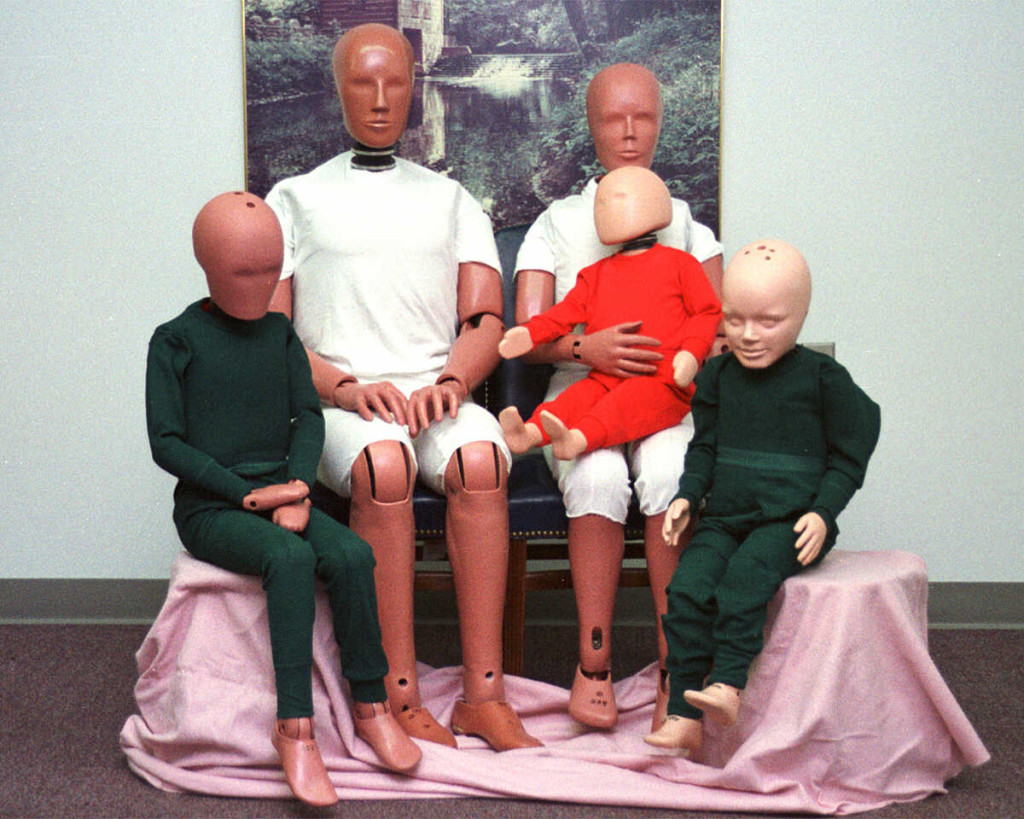
Until the early 1990s, progress in road safety was minimal. While interest in improving passenger protection has been high since the concept's inception, the results have been incredibly low. Just look at how cars passed crash tests in the mid-80s and then compare them with cars from the mid-90s and 2000s - the difference in results is striking.
The consumer perception of the topic has also changed, which means that now security is really for sale. What's more, safety has become one of the main characteristics that people look at when buying a new car. While all car companies have advertised safety for decades, most have done poorly in both crash tests and real-life accidents.
The simple truth is that these companies ignored the high cost of security research and development — they just advertised. If you look at crash tests from the 60s, 70s, and 80s, you won't notice a difference - because there isn't one. The point is that, like good profitable companies, they simply used the psychological image that they were making safer cars - just to make more money.
I believe the quality and success of crash test dummies is measured in the safety features that automakers implement in their vehicles to better protect people. The number of airbags or electronic components are advertised these days solely to boost sales. It is believed that the pace of development of technological progress has not allowed to achieve better results ... is it so? Read on to learn more about the emergence of crash test dummies.
Evolution of crash test dummies
Let's start by explaining what a crash test dummy is and discussing its role. A crash test dummy is an anthropomorphic (or humanoid, if you will) test device (ATD) that attempts to accurately reproduce the movement of a person's body when simulating a vehicle impact. And, as I noted earlier, the quality and success of a dummy is measured by the safety features that automakers implement in their vehicles to better protect passengers. In turn, the effectiveness of a dummy is measured by its ability to collect a wide and accurate array of data on the dynamics of exposure to a person in the event of a car accident.
The public became interested in promoting improved vehicle safety solutions shortly after the world's first multiple car-related accidents. If you are interested in facts, the first recorded victim of a car crash hit by a steam powered car is Mary Ward. This happened on August 31, 1869, 17 years before Karl Benz invented the first gasoline-powered car. In North America, the first recorded car accident occurred on September 13, 1899, when Henry Bliss was shot down while exiting the cab of a New York trolleybus.
The first approach to improving safety was to study the effect of a frontal collision on the human body. This, of course, led to the development of the seat belt. Then attention was focused on the driver's seat, although the structures of the dashboard and the car itself were very rigid, and all the impact force was transmitted directly to the passengers.
The first serious tests were carried out by Wayne University of Detroit, and the first crash tests used ... human corpses.
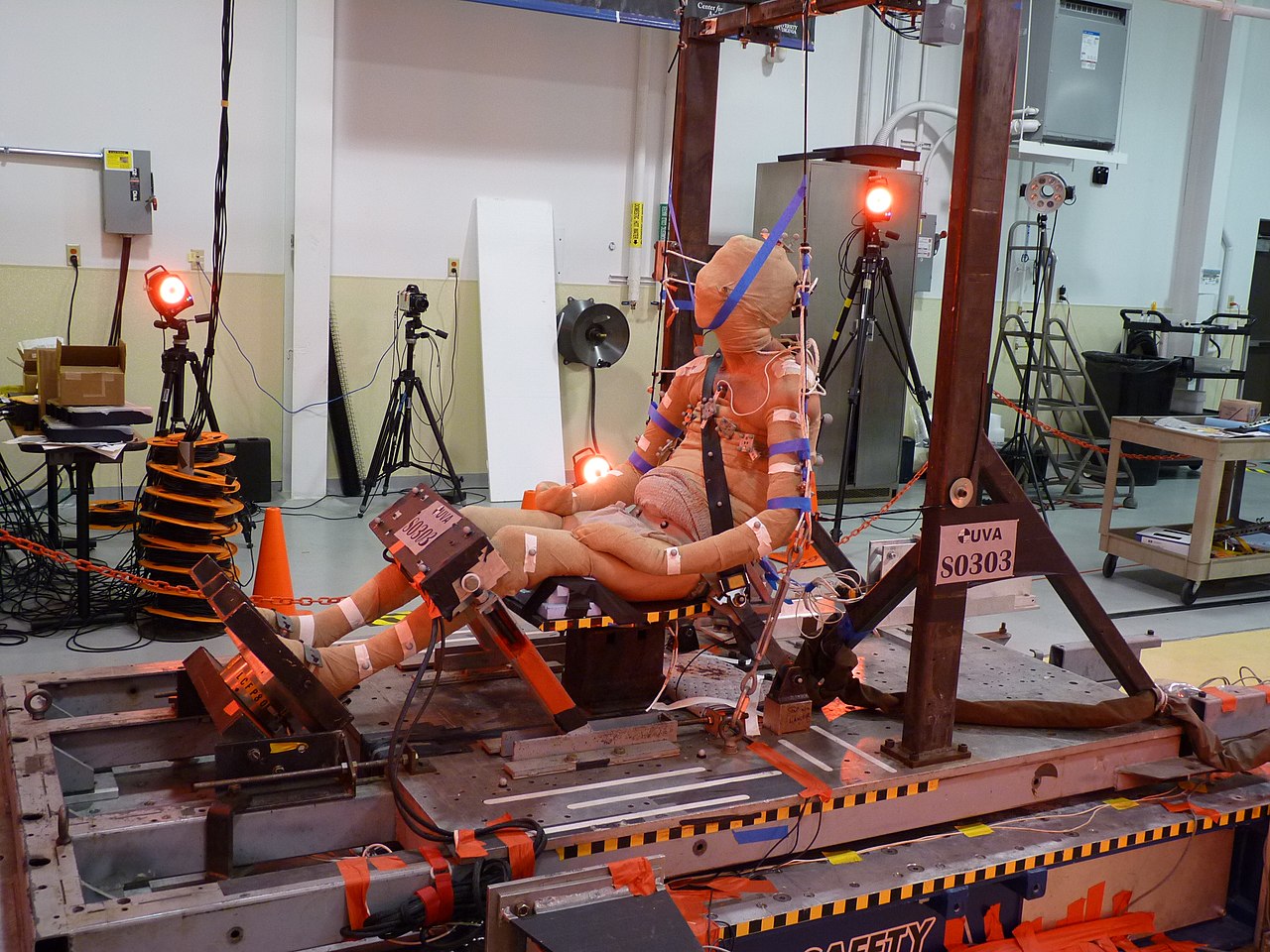
Frontal impact test on a corpse.
Of course, there were ethical and moral concerns surrounding the use of dead people as test dummies, but the researchers argued that the bodies would be useful for research, and their use would help save lives. This gave the use of the corpses an honorific and rejected claims of desecration. The problem is that corpses can only be used once, and only the corpses of naturally killed people can be used, as any previous injuries will prevent the correct determination of accident damage.
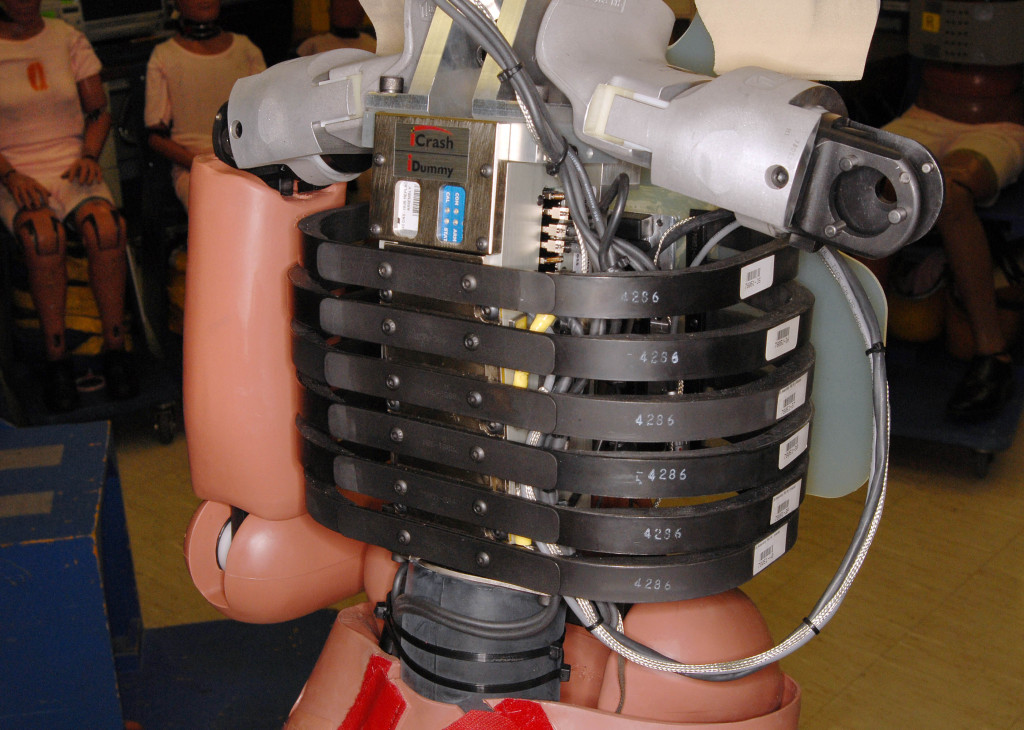
By the mid-1950s, researchers had gathered enough information from tests with cadavers to realize that they needed to improve their procedures for assessing injury in crash tests. Their first options are studies on volunteers and animals. Some of the earliest explorers to act as dummies were Colonel John Paul Stapp of the USAF and Professor Lawrence Patrick of Wayne State University.

Colonel Stapp rides a rocket sleigh at Edwards AFB
Both of them tested the effect of extreme deceleration on the human body. Colonel John Paul Stapp is famous for his military tests of a rocket sled, in which he slowed down from a speed of over 677 km / h to zero in 1.4 seconds. Although the human studies were very accurate, they proved to be extremely dangerous, and the subjects could not withstand certain physical damage.
In terms of animal testing, progress in dummy research has met with strong opposition from animal rights groups, especially the American Society for the Prevention of Cruelty to Animals (ASPCA). The most beneficial animals used during this short period of time were pigs, whose body structure, according to the researchers, was similar to that of a human. Animal testing played an important role when engineers were trying to develop technology to prevent deaths caused by breaking the steering column, since both corpses and living things could not be used.
Introducing the world of mannequins and virtual passengers
The solution to the steering wheel puncture problem came with a folding steering column, which was invented by Mercedes-Benz engineer White Bareni. The fold-down steering column was first introduced in the United States by Chevrolet in 1965. The use of animals for testing has reached both functional and ethical limits, so scientists and researchers have had to look for a more progressive way to simulate human exposure in car accidents.
The first test dummy as everyone knows it today was the Sierra Sam, created by Samuel W. Alderson at his Alderson Research Labs (ARL) and Sierra Engineering Co in 1949. The dummy was much taller and heavier than the average adult male, and was used to test aircraft ejection seats, aviation helmets, and pilot's seat belts.

Sierra Sam is testing ejection seats.
Alderson then created the VIP-50, which was a test dummy specially designed for General Motors and Ford, while Sierra introduced a model called the "Sierra Stan."
GM later tried to combine the best features of the VIP-50 and Sierra Stan models into one test dummy and came up with the Hybrid I. This model was also known as the "50 percent male" because it resembled the average male in height, weight and proportions.
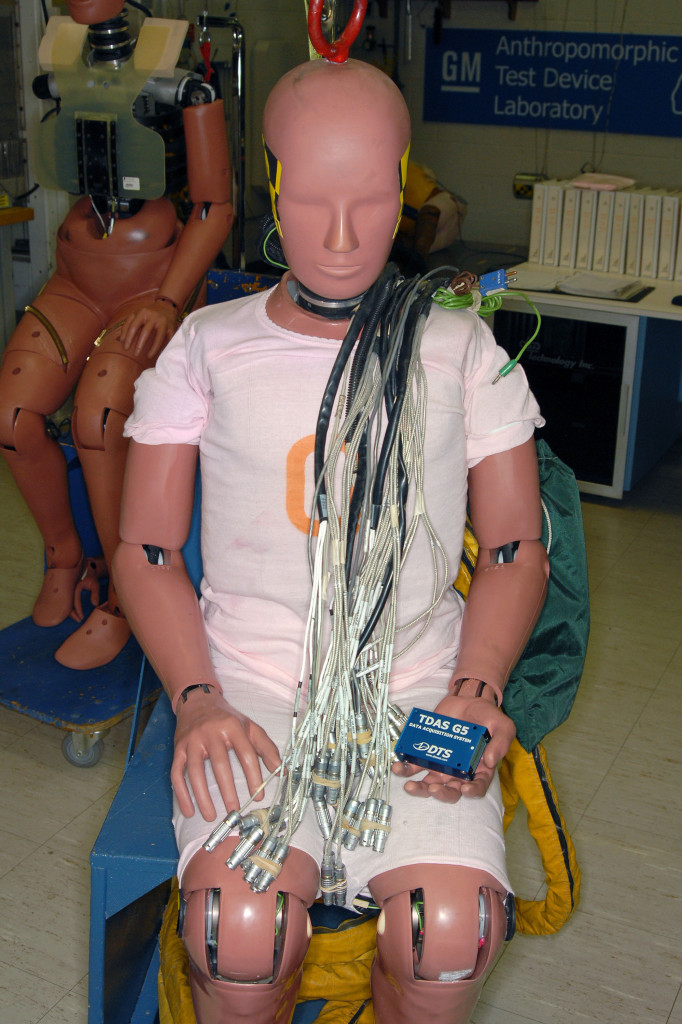
In 1972, GM introduced the Hybrid II Crash Test Dummy, which provided improved response in the spine, shoulder and knee joints, and provided more accurate documentation of injuries.

Two 50th percentile Hybrid II dummies used as ballast in low speed crash testing.
Shortly thereafter, the National Highway Traffic Safety Administration (NHTSA) in the United States entered into an agreement with General Motors to create a crash test dummy that will outperform the Hybrid II dummy and will be adapted for the automotive industry.
The result was presented in 1976 and named the Hybrid III. This 5th percentile male mannequin is 179.8 cm tall and weighs 81.2 kg. The Hybrid III is used by the Insurance Institute for Highway Safety (IIHS) and is currently the most widely used test dummy. To expand the range of results, an entire family has joined the Hybrid III, including the 5th percentile female dummy and three Hybrid III baby dummies, which are ten, six and three years old. A larger 95th percentile male dummy was also introduced to measure the dynamics of a larger person and compare how the results of an accident affect people of different sizes and builds.

The Hybrid III family of dummies has expanded to include 95th percentile male, 50th percentile female and ten, six and three year olds.
For use in crash testing, modern test dummies must be capable of recording several variables such as impact velocity, crushing force, flexion, folding and collision deceleration rates.
The Hybrid III has its limitations, but due to its versatile design, parts are interchangeable and can be adapted to other applications. This dummy was designed to measure frontal impact and is not as useful in side impacts, rollovers and rear impacts. However, where restrictions appear, new, previously unseen solutions appear.

Hybrid III being calibrated by a

10-year-old Hybrid III dummy in an auxiliary seat after a frontal crash test.
Evolution stages
Further developments after the Hybrid III include the following:
- SID (Side Impact Test Dummy ) specially designed to measure impacts to the ribs, spine and viscera, as well as measure chest cavity compression in side impacts.
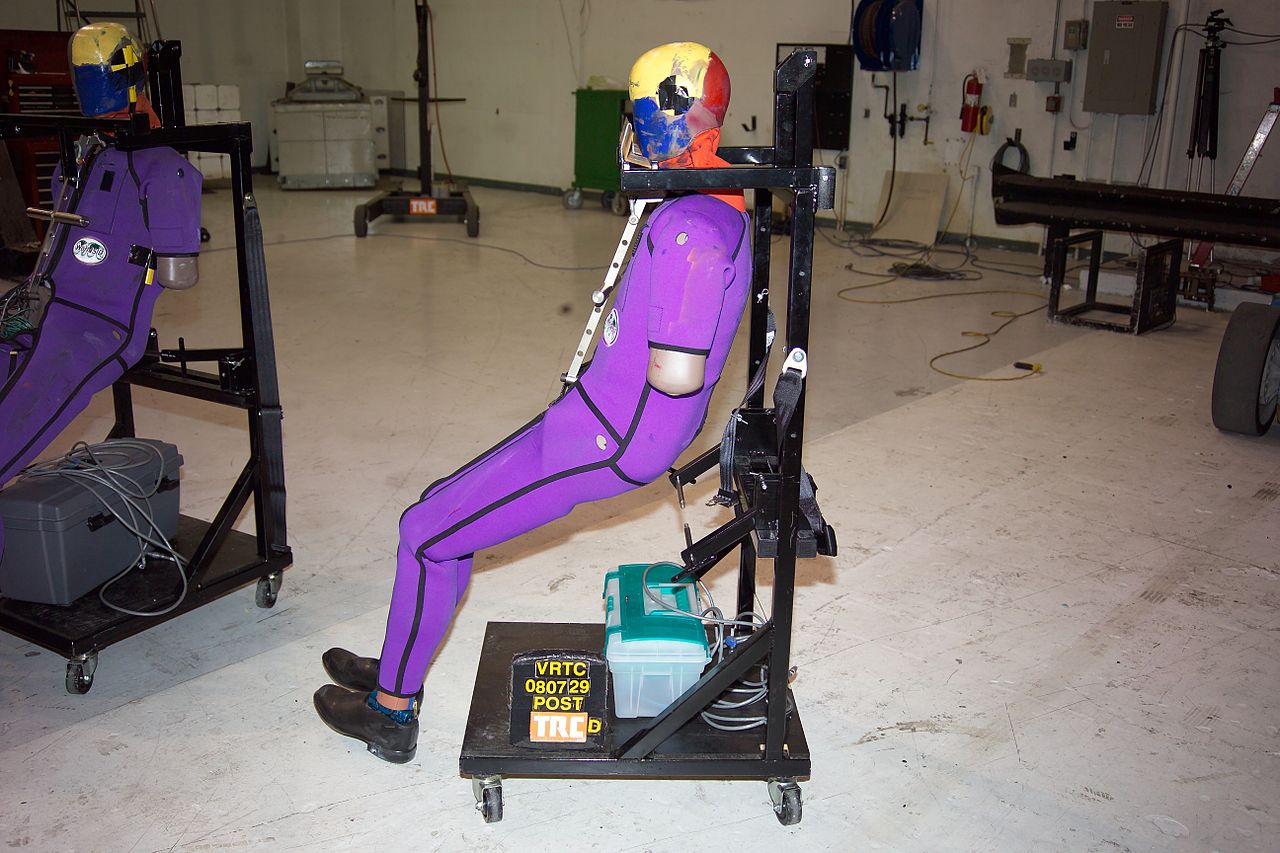
WorldSID is an advanced side impact ATD used for EuroNCAP side impact test modes.
- BioRID . . BioRID 24 .
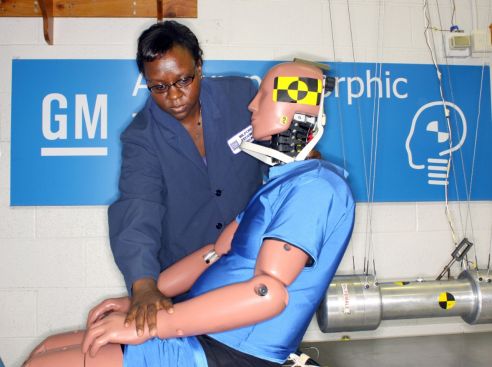
- CRABI , . : 18-, 12- 6-.
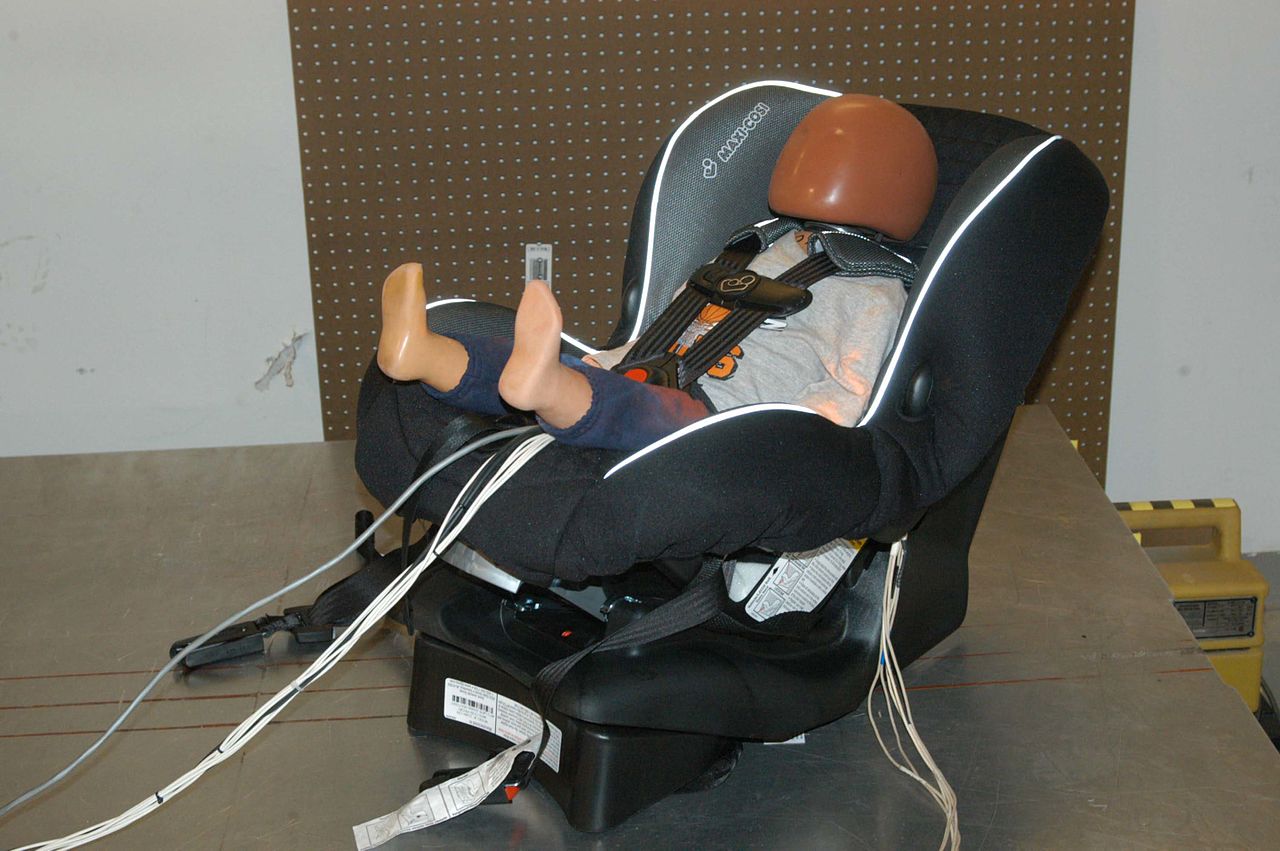
- THOR – 50- , Hybrid III. , , , , , .
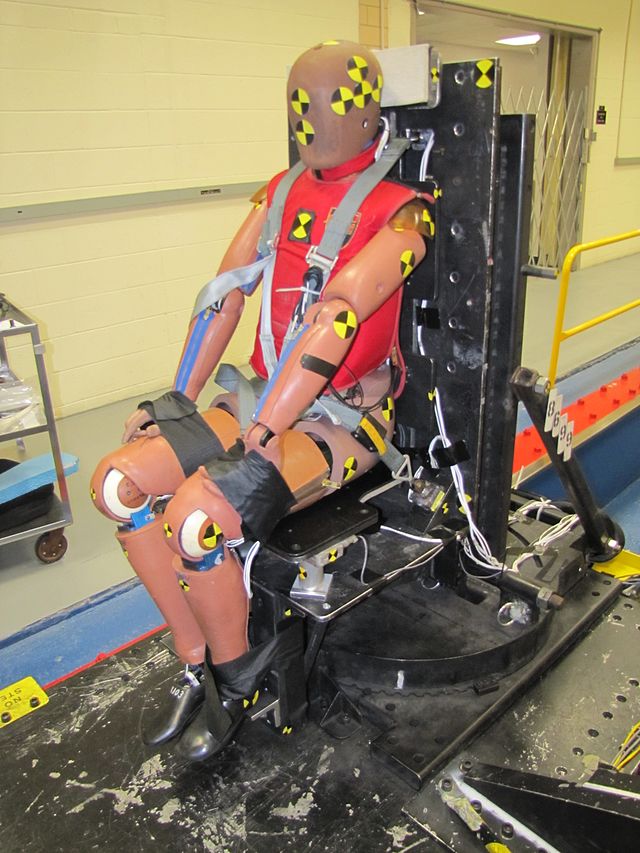
THOR
- i-Dummies – , First Technology Safety Systems , , . GM - , , . «i» , . 22 .
- THUMS (Total HUman Model for Safety) – - Toyota Motor Corporation (TMC). 4.0, ( ) . , , , . THUMS 4 Toyota , .
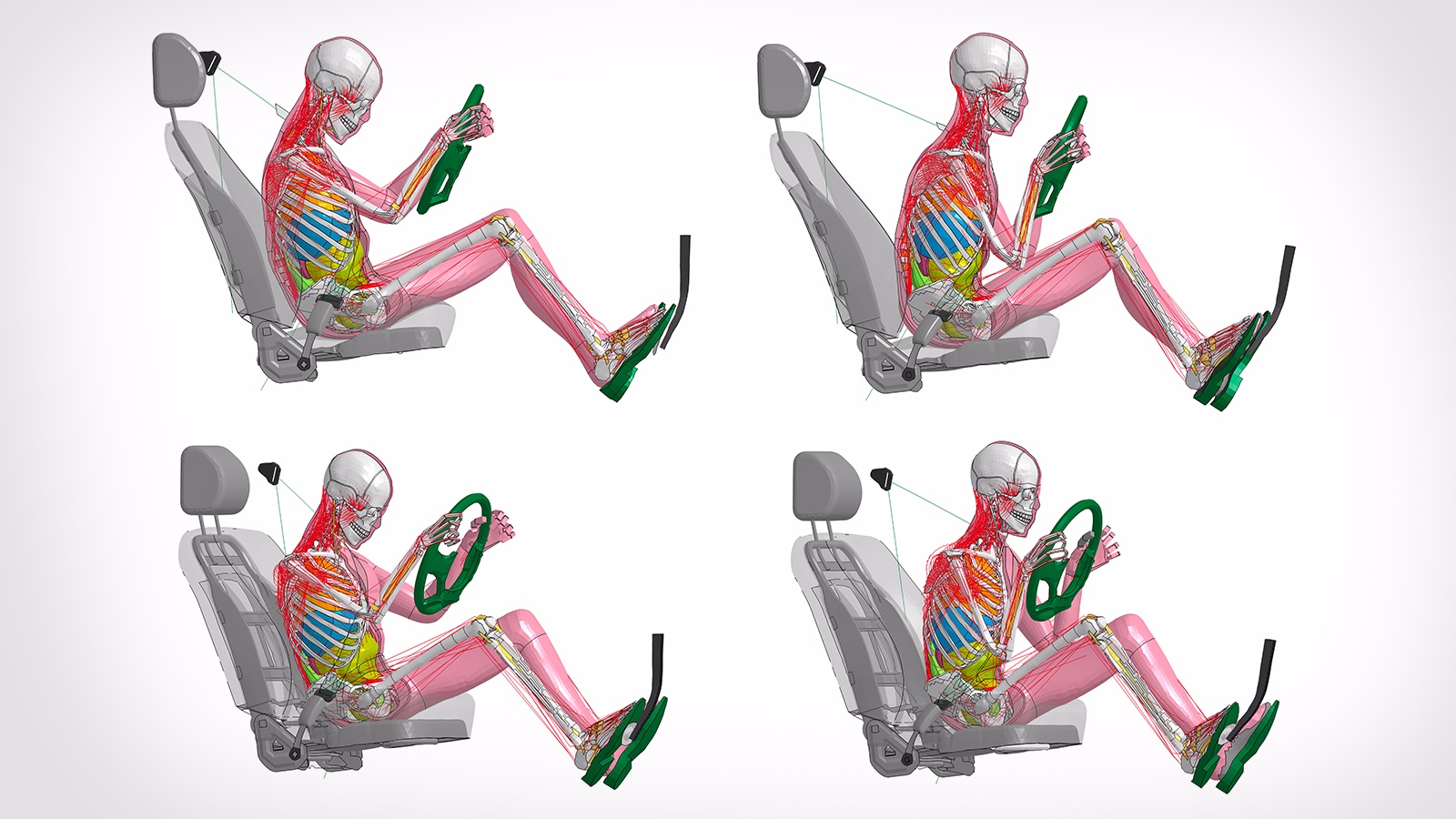

Toyota Technical Development Corporation, which is responsible for the THUMS project, plans to expand its range of crash test dummies to include a larger man and a smaller woman. TMC also plans to sell the THUMS 4 dummy from fall 2010.
Perspectives of crash test dummies
THUMS 4 was developed with the help of research institutes and universities. The development was carried out using a high-precision computed tomograph for detailed measurements of the internal structure of the human body. And this is what the future looks like - a collaborative effort between independent research institutes and universities using advanced computer simulations to reproduce traffic accidents. The purpose of these studies is to improve understanding of how passenger safety can be improved.
Another important area that intrigued the researchers is the imitation of a pregnant woman driving in a collision. The first prototype of a pregnant woman's crash test dummy was manufactured by Loughborough University UK. They placed a container of fluid over the pelvis to simulate the uterus. Their research focused on developing an appropriate harness design for pregnant women, as studies showed that most pregnant women gave up using a harness due to discomfort.
While the importance of computer-based collision simulations is likely to become the main research method in the coming years, we believe the future lies with a combination of virtual collisions and the use of advanced test dummies. While the software will be able to reproduce geometrically correct simulations and calculate accurate collision readings, it will still need to use the dummies we know to confirm the results.

The computer can reproduce countless emergency situations - from different angles and with different objects at different speeds. Even so, steel is just steel and weld points are just weld points, so the relativity of all things dictates the need for full-scale anthropomorphic test devices and real test benches.
The only thing that needs to be done is to start implementing technological innovations as soon as possible (for example, planned crumple zones, intelligent airbags, non-hazardous dashboards and advanced seating designs). Sometimes it seems that companies have put a lot of emphasis on developing crash test dummies, forgetting what they were designed for. 60 years after the invention of the first crash test dummy and more than 90 years since people realized the need to improve vehicle safety, crash test videos are still collecting hundreds of thousands of clicks on YouTube.
Subscribe to the channels:
@TeslaHackers - a community of Russian Tesla hackers, rental and drift training on Tesla
@AutomotiveRu - auto industry news, hardware and driving psychology

: